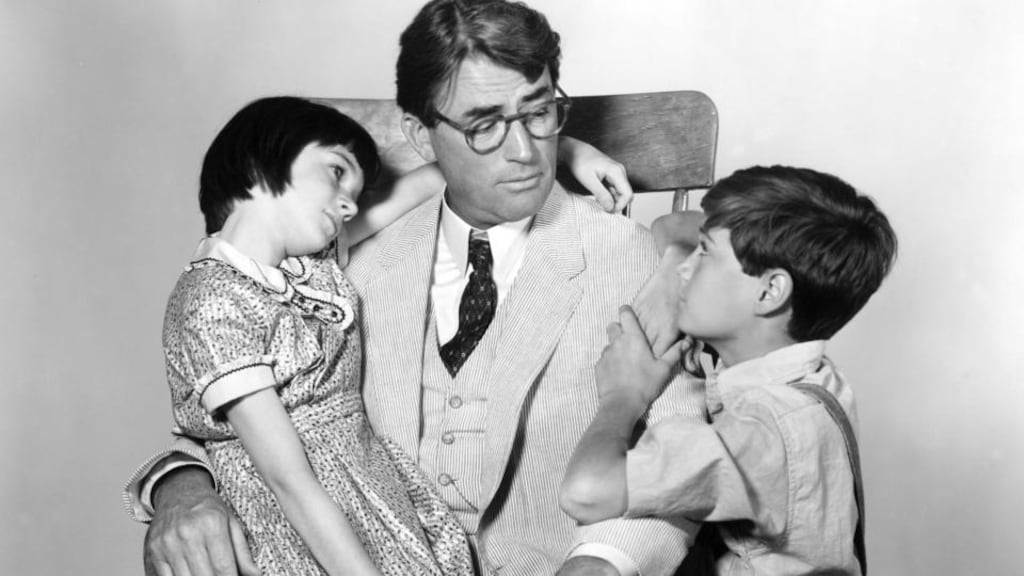“When he was nearly thirteen, my brother Jem got his arm badly broken at the elbow. When it healed, and Jem’s fears of never being able to play football were assuaged, he was seldom self-conscious about his injury.”
When I think about To Kill a Mockingbird, I rarely think of Jem. But there he was in the opening lines, concerned about what is a big deal to a kid – playing sport – and the thought of that ending. And then, relief. It was actually fine. What a trivial thing in a novel that is anything but trivial.
Initially, those opening lines felt like a non-starter, but the beauty of the tenses, young trauma and the characteristics of a person were all there.
I found my copy of To Kill a Mockingbird in my parent's house at Christmas, the minimal black cover coming away from the spine, tears on the top and bottom right-hand corners. The cover was worn so thin it felt like soft cloth. I picked it off the bookcase for the first time when I was 12, the summer between primary school and secondary school.
At night, reading with a torch, the humidity of Alabama would descend. By day, the house of 'Mad' Mary Dunne who used to dance on O'Connell Street and lived at the top of our estate, shouting at us for whistling on our bikes because it was "the devil's sound", became Boo Radley's house. In virtually monocultural Ireland, racism was viewed through a prism of not buying South African oranges, loving Paul McGrath and reading To Kill a Mockingbird in school. The creepy Gothic drama of a faraway place in a faraway time was consuming.
Every page seemed to bring a new life lesson, a depth of thought and feeling that sent a young mind spinning, “You never really understand a person until you consider things from his point of view. . . until you climb inside of his skin and walk around in it.”
The first page of the book had my signature – perfected through repeated efforts on the back pages of copy books – underneath the previous owners of the book. Every page had notes in faded pencil scribbled in the margins. “Racism”, “injustice”, were repeated page after page in capital letters. My notes were in pencil, and eventually red pen to differentiate from the writing of others, even though using pen on a book was a bold step, and banned because all of the pencil had to be rubbed out so the books could be sold on to the second-hand book shop at the end of the school year.
But To Kill a Mockingbird was never going to be in that pile, freshly scrubbed down with an eraser and ready to sell on to get money off the next term's books.
Rare female lead
Every time you turned a page, there were questions. Harper Lee was teaching. What does “assuaged” mean? What is self-consciousness? Why are black people treated so badly? What is molasses? I dreamed of being Scout, a rare female lead in a book or film, joining the ranks of
Little Women
,
Matilda
and
Harriet t
he Spy
. I wondered if could I change my name to hers.
Six years after first reading To Kill a Mockingbird, well over the frustration that there was nothing more of Lee's to read, but resolved with how enigmatic that was, I picked up In Cold Blood and there she was again.
It was Truman Capote’s name on the cover, but it evoked the same atmosphere, something that was confirmed after learning how involved Lee was in the process of creating that book.
The impact of To Kill a Mockingbird on every generation since its publication is huge, but so many things that we watch, read and listen to today are rooted in In Cold Blood. It was published as a four-partner in the New Yorker in 1965 – long before Serial. Before Making a Murderer, people poured over the real people in Kansas where the crime happened: people they never knew but now were consumed by, people they talked to their friends about, and ran through theories, and wondered about motivations for crimes that had occurred years earlier. Capote and Lee went to Kansas to research what had happened in 1959. To Kill A Mockingbird was published in 1960.
Life lessons
In school
To Kill a Mockingbird
had everyone’s attention and took on a new academic meaning, properly dissecting a novel for the first time. English class became something you looked forward to even more than usual, to stick your head down and read the book silently as a classmate read aloud. The discussions became not about the text, but about the world, about people, about history, about cultures, about life.
Many books have a huge impact on people, but few end up defining you in a small or big way. To Kill a Mockingbird taught us about bravery, injustice, inequality, poverty, racism, corruption, hatred, oppression, how we should judge people by their character and nothing else, how the people we are scared of are often not very frightening at all and how those we view as superior or in charge are sometimes the ones to be very scared of indeed. Lee's death is sad, but what a thing to leave behind. Read it again.









